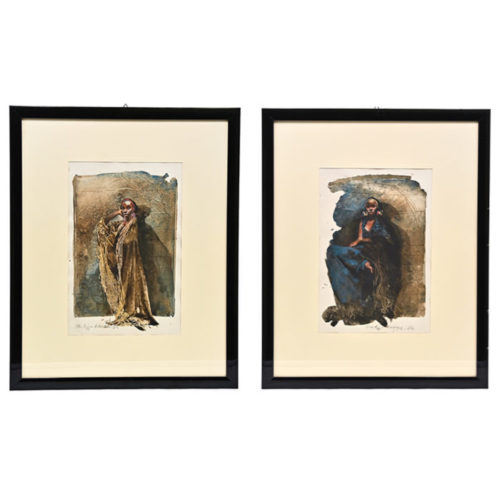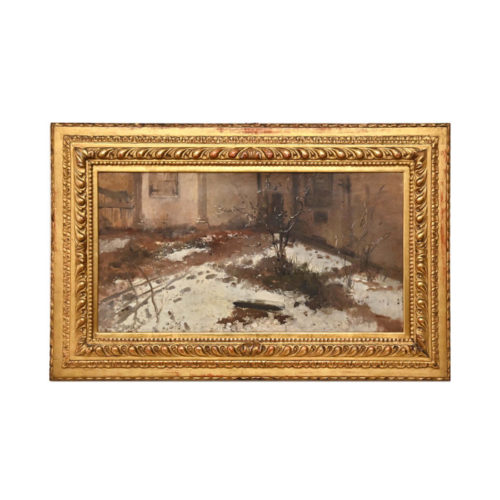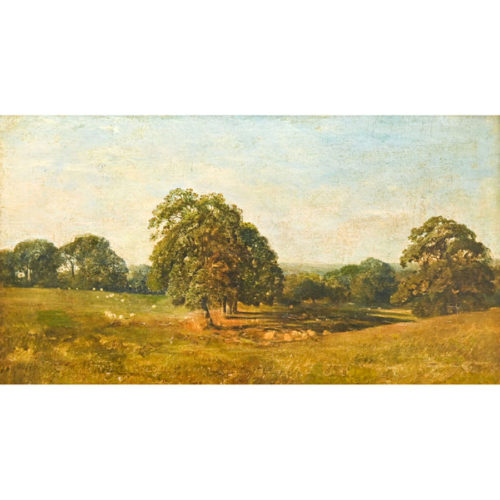-
Out of stock
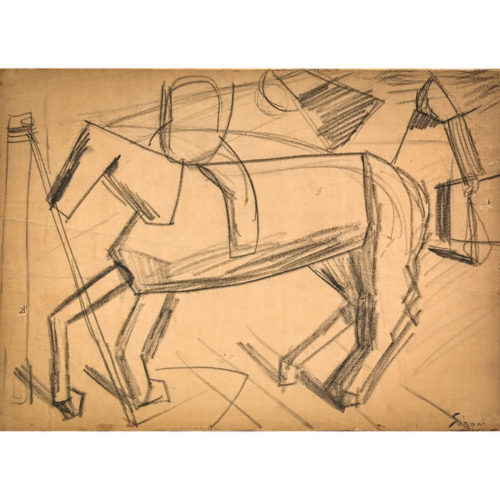 Mario Sironi - Jockey on Horseback - Futurist work from 1914, pencil on canvas paper, signed lower right. On the back, date, title and signature by Willi Macchiati. Period: 1914 Measurements: Framed H 57.5 x W 73 x D 4.5 cm / Paper H 23 x W 32 cm
Mario Sironi - Jockey on Horseback - Futurist work from 1914, pencil on canvas paper, signed lower right. On the back, date, title and signature by Willi Macchiati. Period: 1914 Measurements: Framed H 57.5 x W 73 x D 4.5 cm / Paper H 23 x W 32 cm -
Out of stock
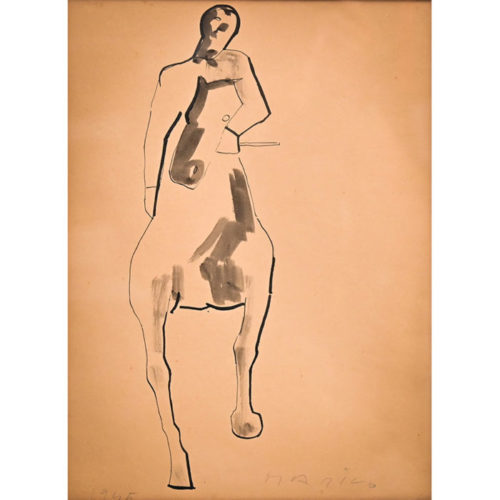 "Cavallo e cavaliere" by Marino Marini, pen and brushstroke ink on paper, 1945. Signature at lower right. The drawing was included in the archive of the artist's autograph works in May '94. Period: 1945 Measurements: Framed H 63 x W 53.5 x D 5.5 / Paper H 35 x W 26 cm
"Cavallo e cavaliere" by Marino Marini, pen and brushstroke ink on paper, 1945. Signature at lower right. The drawing was included in the archive of the artist's autograph works in May '94. Period: 1945 Measurements: Framed H 63 x W 53.5 x D 5.5 / Paper H 35 x W 26 cm -
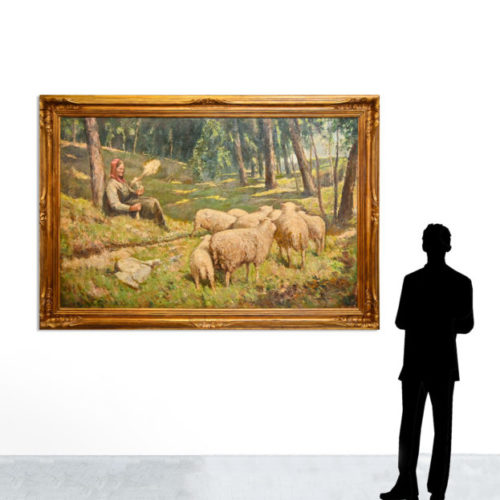 Oil on canvas by Alberto Cecconi (Florence 1897 - 1971), Florentine painter. Large painting from the 1940s, signed at lower right. The scene is set in a wooded landscape and depicts a woman intent on spinning and sheep grazing. Period: 1940s Measurements: H 118 x W 168,5 x D 10,5 cm / Canvas H 95 x W 145 cm
Oil on canvas by Alberto Cecconi (Florence 1897 - 1971), Florentine painter. Large painting from the 1940s, signed at lower right. The scene is set in a wooded landscape and depicts a woman intent on spinning and sheep grazing. Period: 1940s Measurements: H 118 x W 168,5 x D 10,5 cm / Canvas H 95 x W 145 cm -
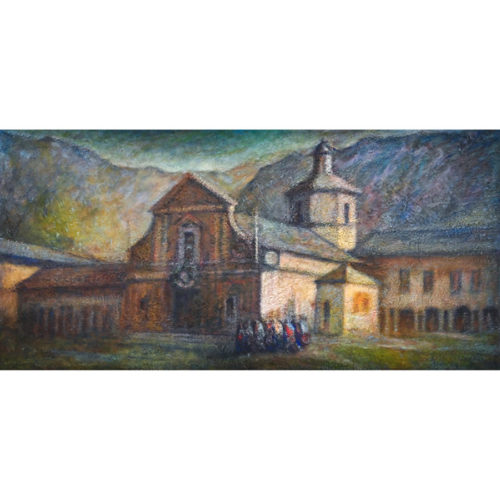 "Santuario d'Oropa" mixed media on canvas by Silvano Magliola Large painting, mixed technique on canvas, from the 1970s, depicting the Sanctuary of Oropa with its ancient Basilica. Silvano Magliola, painter from Biella in the second half of the 20th century. Period: 1970s Measurements: Framed H 114 x W 199,5 x D 4,5 cm / Canvas H 99 x W 184,5 cm
"Santuario d'Oropa" mixed media on canvas by Silvano Magliola Large painting, mixed technique on canvas, from the 1970s, depicting the Sanctuary of Oropa with its ancient Basilica. Silvano Magliola, painter from Biella in the second half of the 20th century. Period: 1970s Measurements: Framed H 114 x W 199,5 x D 4,5 cm / Canvas H 99 x W 184,5 cm -
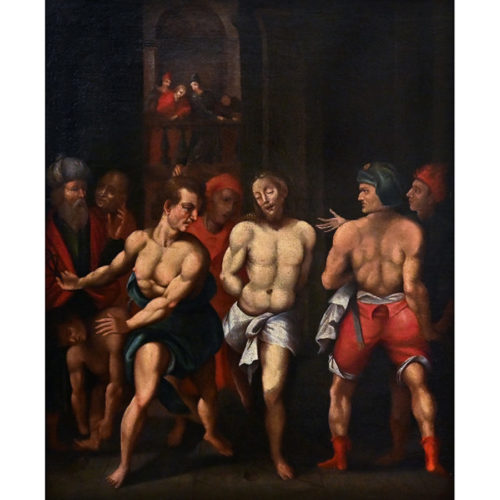 "The flagellation of Christ" Oil on canvas from the 17th century. The painting represents a sacred scene full of characters. The technique of pittutr is of excellent quality. The work is in an excellent state of preservation and has been slightly restored. Period: 17th century Measures: H 74 x W 62,5 x D 2 cm
"The flagellation of Christ" Oil on canvas from the 17th century. The painting represents a sacred scene full of characters. The technique of pittutr is of excellent quality. The work is in an excellent state of preservation and has been slightly restored. Period: 17th century Measures: H 74 x W 62,5 x D 2 cm -
 Scene of a courtyard, oil on cardboard by Daniele Fissore, signed and dated on lower right, a very rare work as the artist usually depicts the landscape without figures. Daniele Fissore (Savigliano 1947 - Savigliano 2017) began his artistic career as self-taught artist. In 1975 he took part in the X Quadriennale in Rome and in 1976 in the "Biennale del disegno" in Milan. A constant evolution of the first pictorial themes (see the "Telephone booths", the "Oppositions", the "Reconnaissance", investigated with an in-depth analysis of strong photographic inspiration), led him to the human figure and the portrait. Period: 1980 Measurements: Framed H 69 x W 93 x D 4,5 / Cardboard H 60 x W 84 cm
Scene of a courtyard, oil on cardboard by Daniele Fissore, signed and dated on lower right, a very rare work as the artist usually depicts the landscape without figures. Daniele Fissore (Savigliano 1947 - Savigliano 2017) began his artistic career as self-taught artist. In 1975 he took part in the X Quadriennale in Rome and in 1976 in the "Biennale del disegno" in Milan. A constant evolution of the first pictorial themes (see the "Telephone booths", the "Oppositions", the "Reconnaissance", investigated with an in-depth analysis of strong photographic inspiration), led him to the human figure and the portrait. Period: 1980 Measurements: Framed H 69 x W 93 x D 4,5 / Cardboard H 60 x W 84 cm -
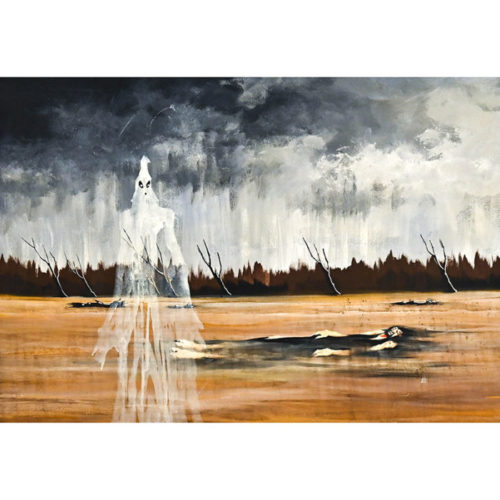 "I am Bonconte da Montefeltro ... So wounded at the top of the throat ..." Oil on canvas by Giancarlo Cori. Painted in 1984, the year in which he paints his last works. Confirmation of authenticity by his son Nicolò Cori. Period: 1984 Measurements: In frame H 84 x W 113.5 x D 3.5 / Canvas H 78 x 107.5 cm
"I am Bonconte da Montefeltro ... So wounded at the top of the throat ..." Oil on canvas by Giancarlo Cori. Painted in 1984, the year in which he paints his last works. Confirmation of authenticity by his son Nicolò Cori. Period: 1984 Measurements: In frame H 84 x W 113.5 x D 3.5 / Canvas H 78 x 107.5 cm -
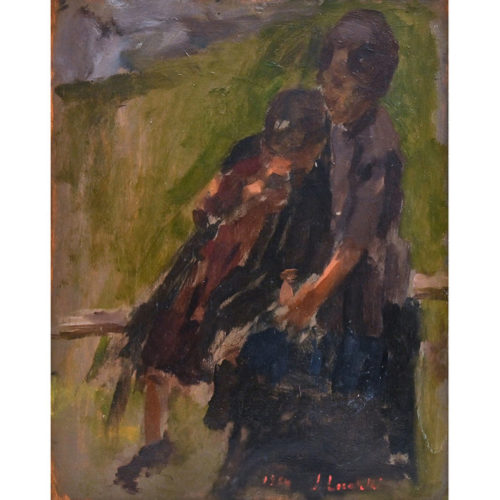 Oil on tablet, Luigi Locatelli. Painted tablet by Luigi Locatelli, depicting mother with child on a fence, signed lower right. No frame. Locatelli Luigi (known as Bigì) (Bergamo 1904-1983) after his first training with his father, he enrolled at the Carrara Academy. Before the age of twenty he starts working for the Milan gallery owner Zecchini. In the 1930s he moved to Paris where he became friends with the great Italian artists who lived in the French capital. After about ten years he returns to Italy settling in Bologna where he works as a restorer. Period: 1934 Measurements: H 41 x L 33 cm
Oil on tablet, Luigi Locatelli. Painted tablet by Luigi Locatelli, depicting mother with child on a fence, signed lower right. No frame. Locatelli Luigi (known as Bigì) (Bergamo 1904-1983) after his first training with his father, he enrolled at the Carrara Academy. Before the age of twenty he starts working for the Milan gallery owner Zecchini. In the 1930s he moved to Paris where he became friends with the great Italian artists who lived in the French capital. After about ten years he returns to Italy settling in Bologna where he works as a restorer. Period: 1934 Measurements: H 41 x L 33 cm -
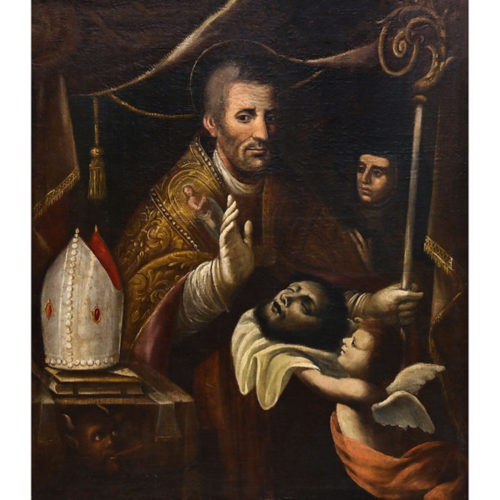 "San Grato Di Aosta with the head of the Baptist" oil on canvas from the first half of the 18th century. The work has been restored. An important legend flourished on the account of San Grato, now proven to be completely anachronistic, which goes by the name of Magna legenda Sancti Grati and is attributed to canon Jacques des Cours, who lived in the 13th century. The story of the discovery of the head of St. John the Baptist, a relic often associated with San Grato in popular iconography, dates back to this tradition. Beheaded by a whim of the beautiful Salome, the head of the Forerunner by order of King Herod Antipas was buried in a well separated from his body, for fear that he might miraculously rejoin it and John might rise again. Grato had a vision from the Lord, in which he was shown the secret location of the burial. He left Aosta in the company of his companion Giocondo, received the Pope's blessing in Rome and then embarked for the Holy Land. During the crossing, a great storm broke out, which threw terror among the sailors, but Grato, raised his arms to the sky, which instantly returned calm. When he arrived in Macheron, near the ruins of Herod's castle, an angel guided him, taking him by the hand and leading him to the well where the head of the Baptist had been for centuries. Immediately the relic rose to the surface and settled in Grato's outstretched palms. Period: First half of the 18th century Measurements: H 110.5 x W 97 x D 2 cm
"San Grato Di Aosta with the head of the Baptist" oil on canvas from the first half of the 18th century. The work has been restored. An important legend flourished on the account of San Grato, now proven to be completely anachronistic, which goes by the name of Magna legenda Sancti Grati and is attributed to canon Jacques des Cours, who lived in the 13th century. The story of the discovery of the head of St. John the Baptist, a relic often associated with San Grato in popular iconography, dates back to this tradition. Beheaded by a whim of the beautiful Salome, the head of the Forerunner by order of King Herod Antipas was buried in a well separated from his body, for fear that he might miraculously rejoin it and John might rise again. Grato had a vision from the Lord, in which he was shown the secret location of the burial. He left Aosta in the company of his companion Giocondo, received the Pope's blessing in Rome and then embarked for the Holy Land. During the crossing, a great storm broke out, which threw terror among the sailors, but Grato, raised his arms to the sky, which instantly returned calm. When he arrived in Macheron, near the ruins of Herod's castle, an angel guided him, taking him by the hand and leading him to the well where the head of the Baptist had been for centuries. Immediately the relic rose to the surface and settled in Grato's outstretched palms. Period: First half of the 18th century Measurements: H 110.5 x W 97 x D 2 cm
